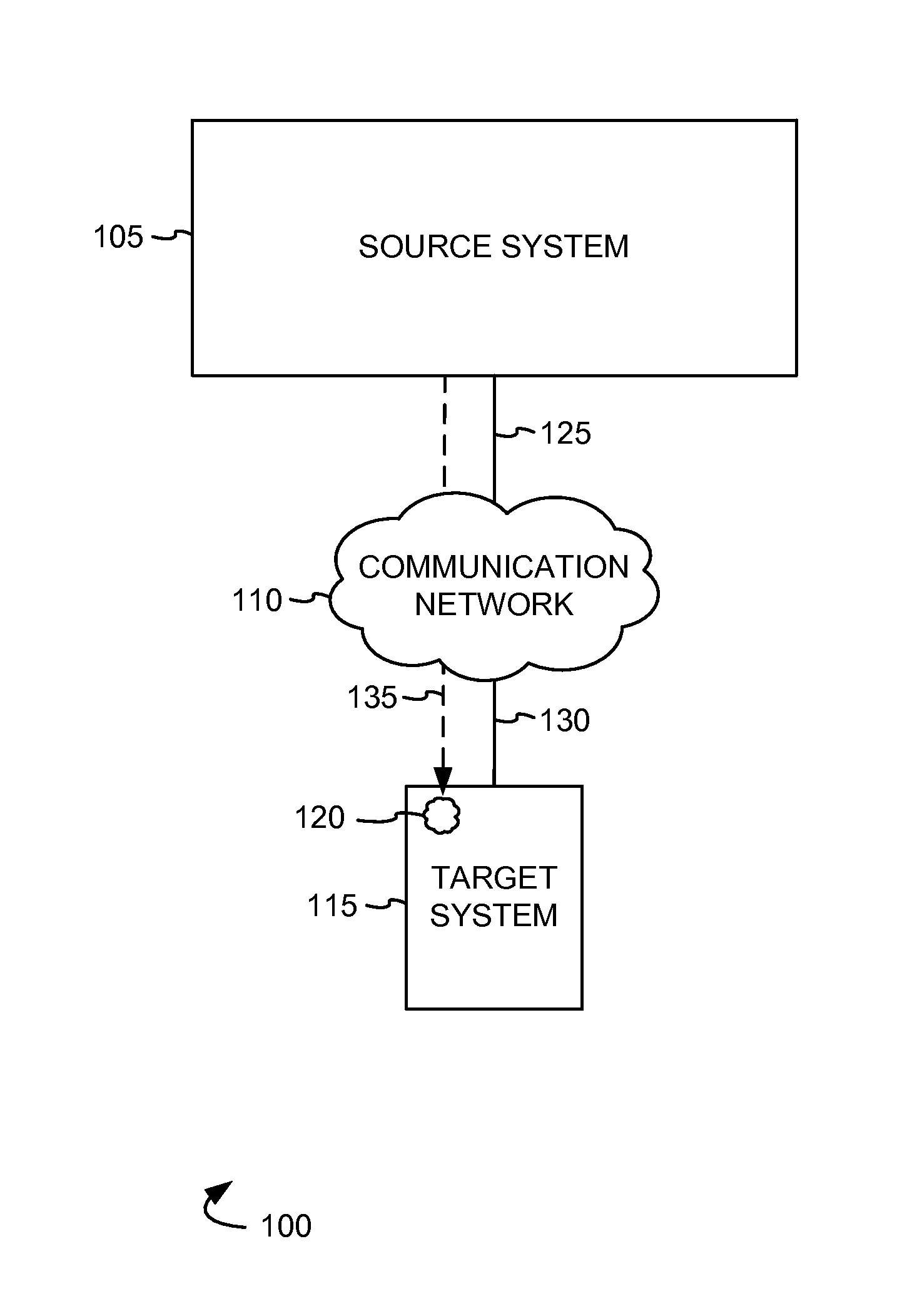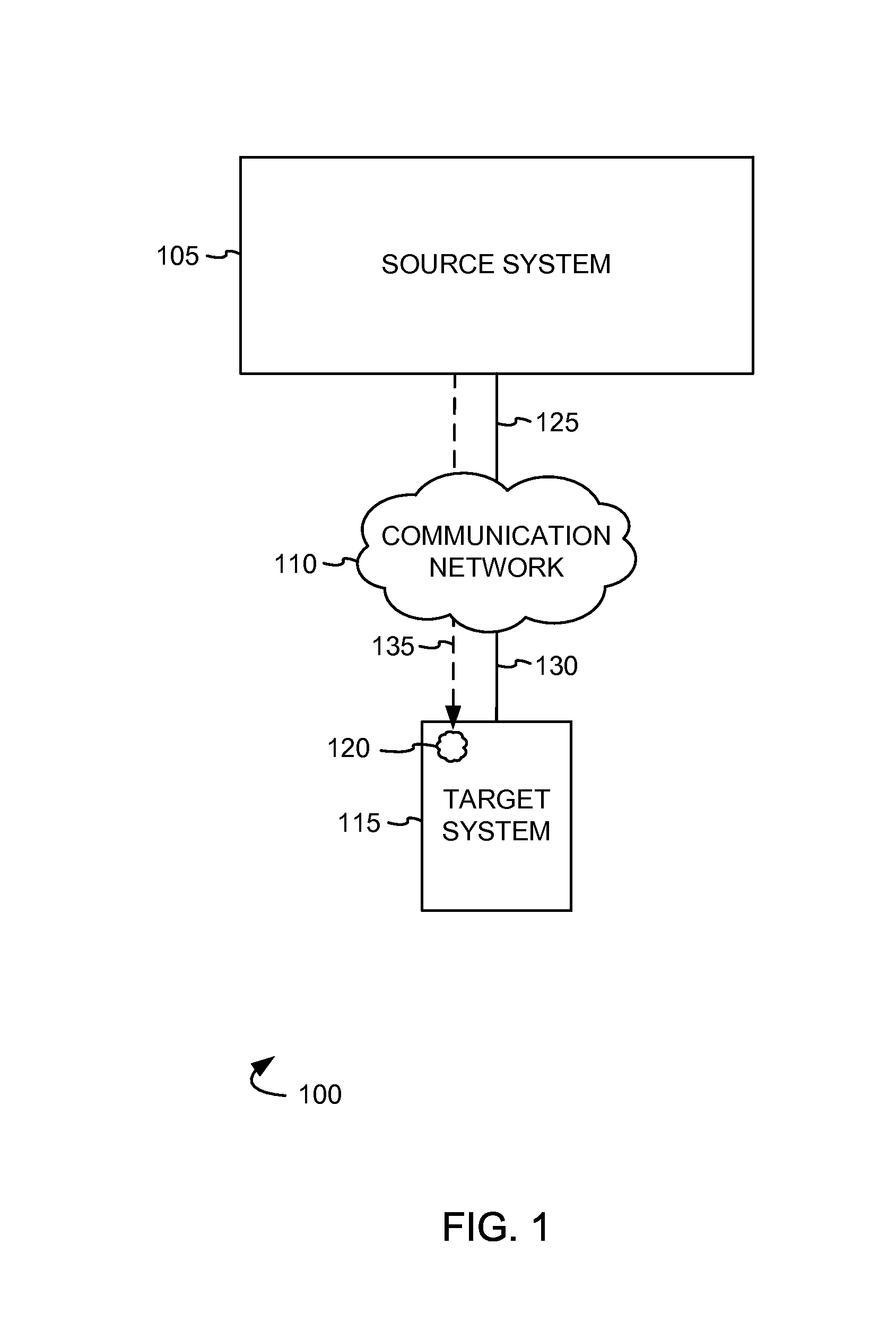Detecting malicious software
a software and malicious technology, applied in the field of can solve the problems of ineffective detection of malicious software, hostile software code, intrusive or annoying, and the use of snapshot views,
- Summary
- Abstract
- Description
- Claims
- Application Information
AI Technical Summary
Benefits of technology
Problems solved by technology
Method used
Image
Examples
Embodiment Construction
[0009]In an embodiment, a source system assembles a software agent comprising at least one scan module and transfers the software agent to a target system. The software agent sends a connection request to the source system, and the source system establishes a connection to the software agent in response to the connection request. A file of the target system is received from the software agent and is analyzed by the source system. A static analysis is performed on the transferred file to generate a static threat score for the transferred file, and a dynamic analysis is performed on the transferred file to generate a dynamic threat score for the transferred file. Based on the static threat score and the dynamic threat score, an aggregate threat score for the transferred file is generated. When the aggregate threat score meets a threshold, the file is determined to be malicious software.
[0010]FIG. 1 illustrates an exemplary communication system 100 to detect malicious software. Communi...
PUM
 Login to View More
Login to View More Abstract
Description
Claims
Application Information
 Login to View More
Login to View More - R&D
- Intellectual Property
- Life Sciences
- Materials
- Tech Scout
- Unparalleled Data Quality
- Higher Quality Content
- 60% Fewer Hallucinations
Browse by: Latest US Patents, China's latest patents, Technical Efficacy Thesaurus, Application Domain, Technology Topic, Popular Technical Reports.
© 2025 PatSnap. All rights reserved.Legal|Privacy policy|Modern Slavery Act Transparency Statement|Sitemap|About US| Contact US: help@patsnap.com



